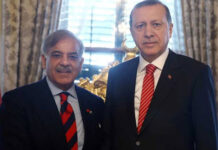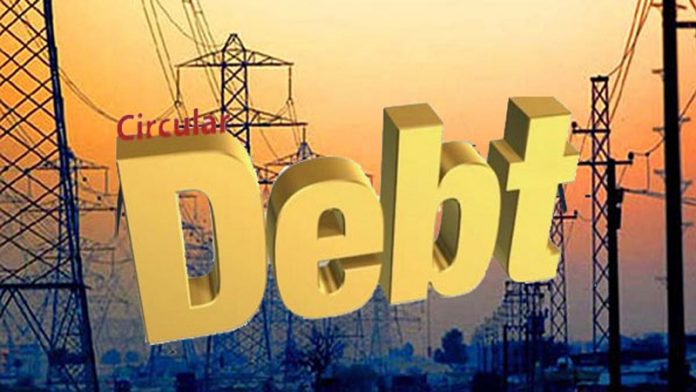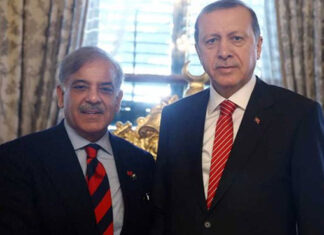ISLAMABAD
Despite tall claims of good governance by Pakistan Muslim League-Nawaz (PML-N) government, the menace of circular debt has resurfaced once again to an alarming level of Rs 729 billion, which is larger than the much criticised PPP government had.
Surprisingly, the circular debt level has been hitting a record level largely due to accumulation of arrears in the power sector, however, the incumbent regime instead of admitting failure to control the circular debt used to claim that the government has been successful to control the threat of circular debt that may be visible from the fact that all plants (power) are operating and no one is closed due to nonpayment or non-availability of fuel.
Industries are not facing load shedding. Also, the generation capacity is increasing and duration of power outages has also been witnessing drastic cut in spite of the continuous increase in electricity demand. However, the menace of circular debt has gone beyond to the level the much criticised PPP government had during its constitutional tenure 2008 to 2013. And, it is also feared that the PML-N government might leave larger circular debt burden for the next government than the former PPP government had.
Documents available with Pakistan Today revealed the circular debt has stood above Rs 729.9 bn as it had reached at Rs 411 bn on June 30, 2013, Rs 512.9 bn on June 30, 2014, while it was at Rs 633.2 bn on June 30, 2015, and Rs 684.1 bn on June 30, 2016.
Similarly, the detailed breakup of the amount which was outstanding under the head of circular debt to the federal government by power plant during said period disclosed that it has gone beyond Rs 379 bn. As on June 30, 2017, it was at Rs 379 bn, Rs 321 bn on June 30, 2016, Rs 313.1bn on June 30, 2015, while it stood at Rs 265.5 bn on June 30, 2014, and Rs 207.1 bn on June 30, 2013, said documents.
According to details of the amount paid to power plants till June 30, 2017, total payment to the gas-run Gencos (Mari (Genco-II), PPL (Genco-I), SNGPL (Genco I-II-III), SSGCL (Genco-I-II-III)) was Rs 74,292 million against a billing of 83,094, as outstanding amount of Rs 8,802 mn was left pending. Similarly, only Rs 74,292 mn was paid to oil-run power plants of Gencos-i-ii-iii (PSO) against a billing of 179,216 and left pending the outstanding amount of Rs 82,172 mn. Likewise, Rs 296,786 mn was paid to HUBCO, KAPCO, AES (Pakgen), SEPCOL, Japan, Liberty, Uch, Rouch, Fauji, Habibullah Altern, Cavis Energy against total billing of 463,674 and left an outstanding amount of Rs 168,089 mn pending.
In the same way, Rs 236,947 mn payment was made to AGL Powers, HUBCO Norowal, Atlas Power, Nishat Power, Nishat Chunian Power, Liberty Power Tech, Chiniot Power, Saif Power, Saphire Electric Power, Halmore Power, Engro Power, Foundation Power, Uch-ii, Laraib Power, FFC Energy, Zorlu Energy, JDW Sugar Mills Unit-II, JDW Sugar Mills Unit-III, Three Gorges First, Foundation Energy, Foundation Energy, RYK Mills, Quaid-e-Azam Solar on June 30, 2017, against the billing of 297,312 and left pending outstanding amount of Rs 60,366 mn. Furthermore, Chashma (Nuclear) Plant 1, 2 & 3 received Rs 28,047 mn against total billing of 38,070 and in this way left outstanding arrears of Rs 10,023 mn. Besides, payments to other sources of electricity like hydel (WAPDA), Iran etc were Rs 186,174 mn against a billing of 236,750 and left Rs 49,576 mn outstanding amount pending. In this way, the government has paid Rs 918,288 mn against the total billing of 1,297,315 and left the outstanding amount of Rs 379,027 mn pending on June 30, 2017.
Last but not least, the receivable position of Pakistan State Oil (PSO) is not presenting a rosy picture as the receivables currently stand above Rs 290 bn due to pending arrears of power sector, PIA, LNG etc. The power sector receivables of PSO are above Rs 260 bn, while Rs 15.6 bn is of PIA and Rs 6.8 bn is of liquefied natural gas (LNG) supply.
Officials of Energy Ministry earlier conveyed to the former Prime Minister Nawaz Sharif that though the issue of low power production has been resolved to some extent, however, circular debt issue cannot be solved or parked without rationalising the electricity tariff. And, rationalisation of tariff should be done by Energy Ministry instead of NEPRA.
Sharing details of tariff rationalisation plan, official sources at Energy Ministry on condition not to be named said that the government will now table amendments in NEPRA as before the parliament for necessary approval. And, after getting the legislator’s nod, the proposed amendment will become part of the NEPRA Act.
As a result of such amendments in NEPRA Act, the Energy Ministry will rationalise the tariff at first stage and later it will determine the new tariff. They said the power consumers will pay Rs 3.50 per unit in the name of tariff rationalisation. The tariff rationalisation is to be done in a bid to reduce the burgeoning power sector circular debt which currently stands at Rs 729 bn and to run the power generation plants at full capacity during the period of next general election 2018 in the country.
It is pertinent to mention here that when the PML-N government took charge of affairs in 2013, it made a lot of noise over the alarming levels of circular debt that had been accumulated in the power sector, which itself was not incorrect since the preceding PPP government had left the incoming government with a Rs 480 bn mess to deal with.
And, after assuming the powers, PML-N wiped clean almost Rs 500 bn of circular debt in one (unaudited) payment back in June 2013, and claimed that it had planned to eliminate the circular debt within days and it would do everything to bring the economy back on track and not allow the debts pile up.
The ruling PML-N government might face severe criticism from political parties and public as well during the next general elections due to the accumulation of larger circular debt.























